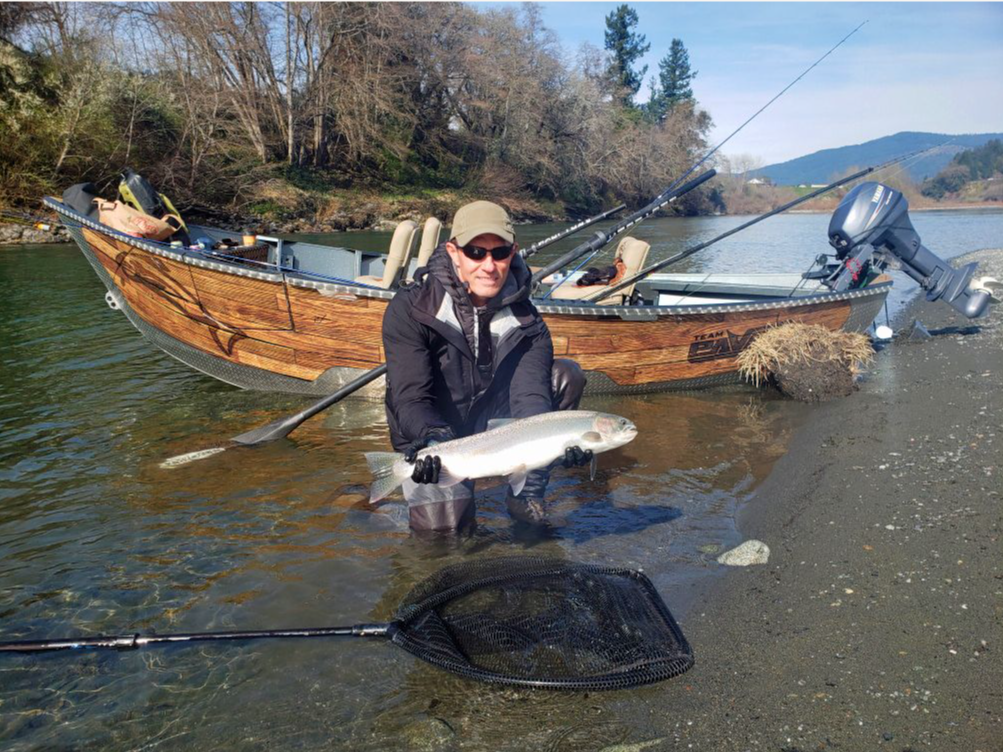Boondogging
Boondogging is the easiest form of side drifting to master because it’s so simple: Basically, you just turn the boat broadside to the current, cast directly upstream and then drag the baits downriver at the speed of the current. But just because it’s easy doesn’t mean it’s any less effective. This technique works best on big water but it also will produce on smaller rivers that have some color. It allows steelheaders to cover lots of ground in a short amount of time and is suitable for both jet sleds and driftboats.
To properly boondogg, set up well upstream of a piece of good looking water and pitch the boat sideways. As it starts to drift with the current, casts of 30 to 60 feet should be made upstream. The biggest key here is to use enough lead to get to the bottom quickly. With the proper amount of lead, the sinkers will lightly tap but not drag on the bottom.
It’s the driver’s responsibility to keep the boat drifting over the best water with the lines running as straight (perpendicular) off the upstream side of the boat as possible. A small kicker motor is the best way to make subtle course corrections.
When a steelhead hits a boondogged bait, there’s usually nothing subtle about it. Typically, the bait is moving rapidly downstream and the fish is headed upriver. This collision of forces often causes the rod to double over wildly. Usually, the fish will hook itself, but setting the hook anyway isn’t a bad idea.
The same basic rods and tackle used for freedrifting will work for boondogging. Roe is the most common bait used here, though nightcrawlers are another favorite.
Since all the side drifting methods are performed on moving water, often with the boat drifting backwards or broadside to the current, safety is of the utmost concern. The boat’s operator should always pay attention to what lies downstream and make early positioning adjustments to avoid any obstructions. Slamming into a partially-submerged log, boulder or gravel bar can knock people out of boats in a hurry – or worse.
